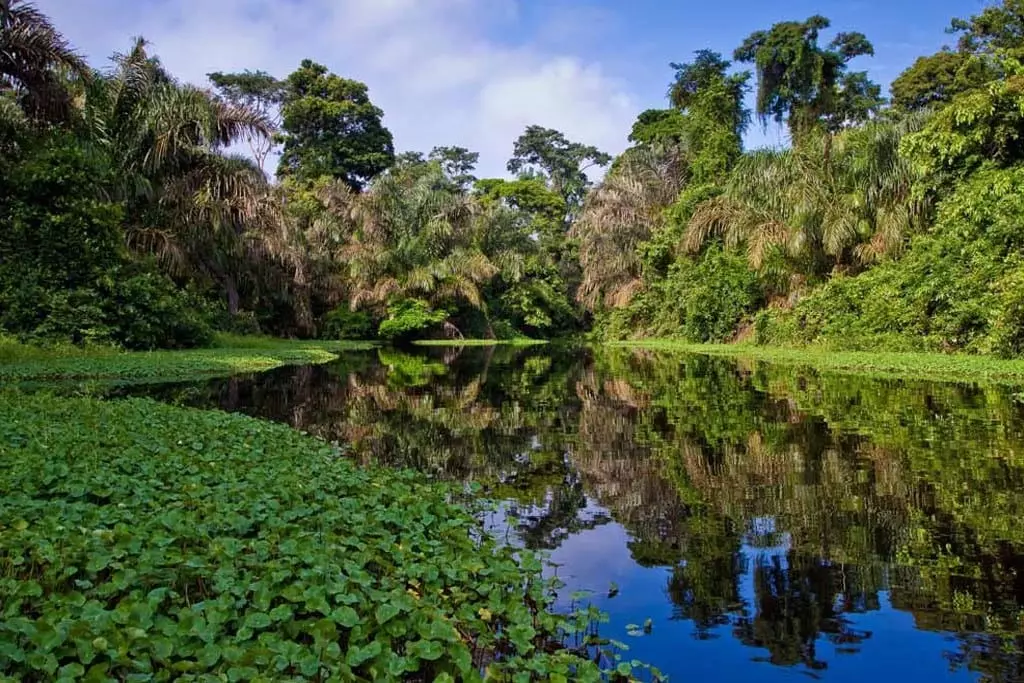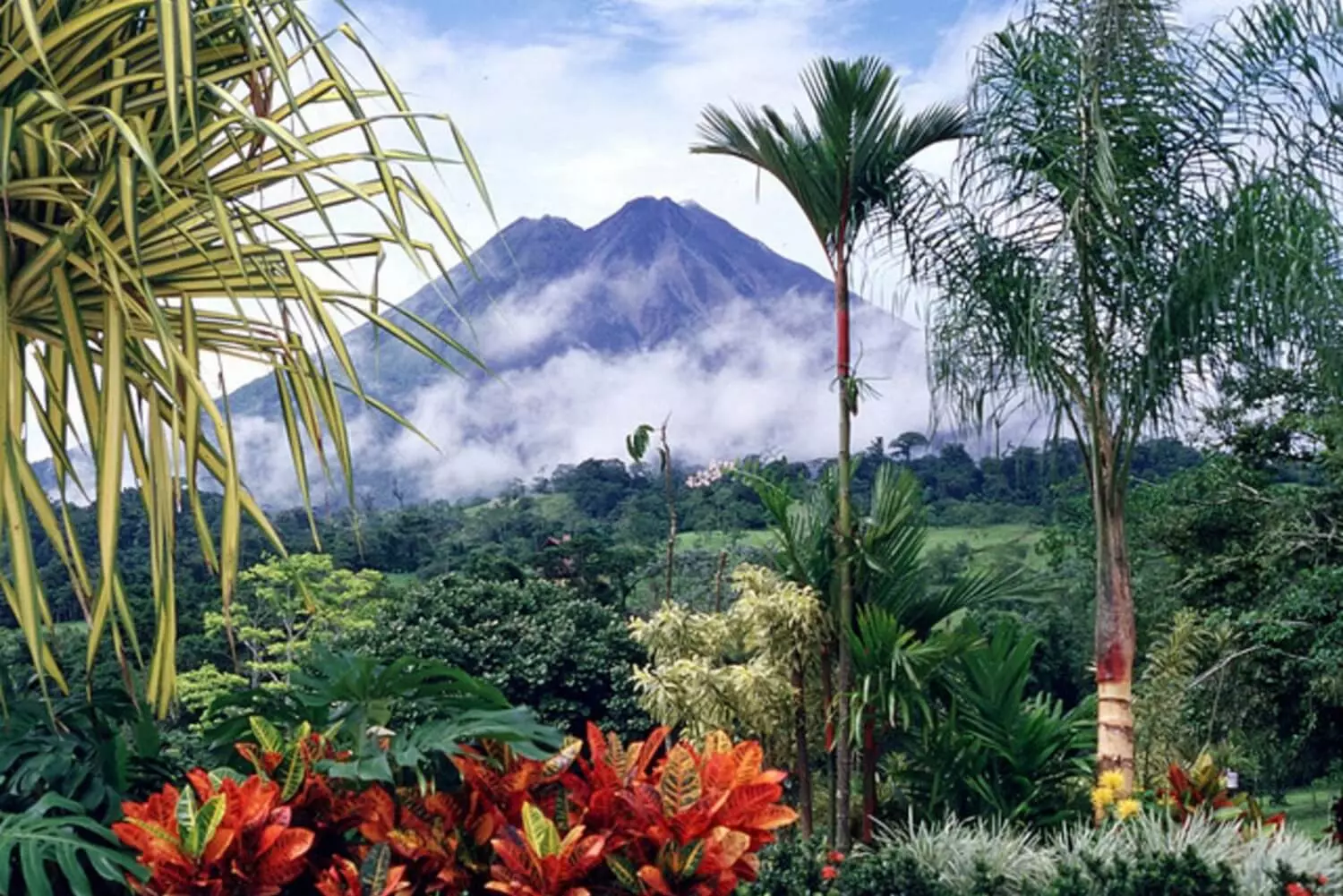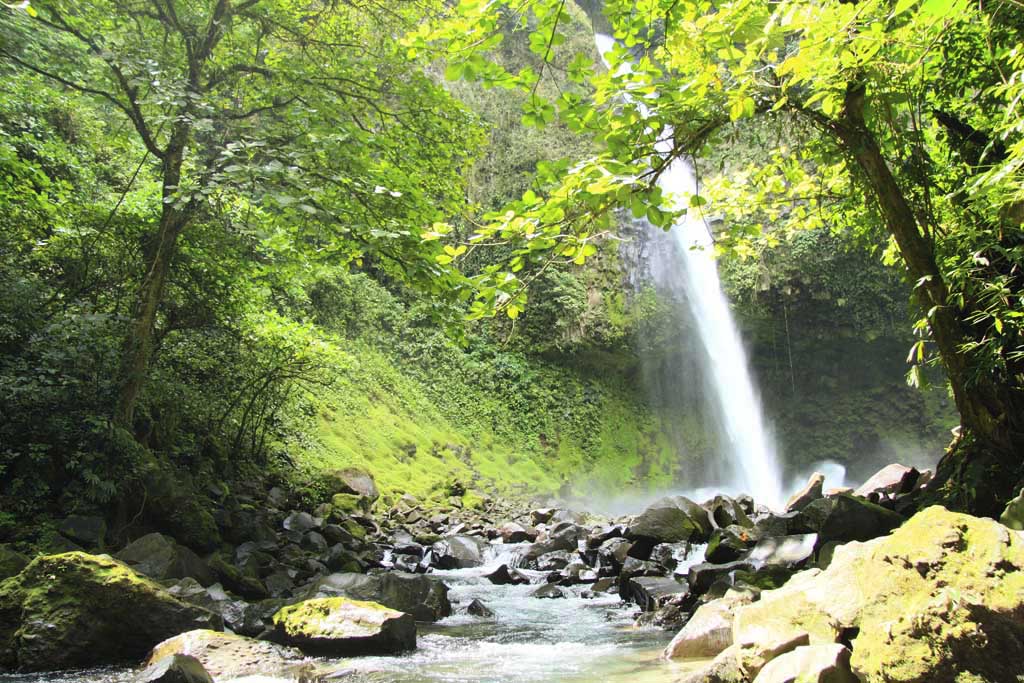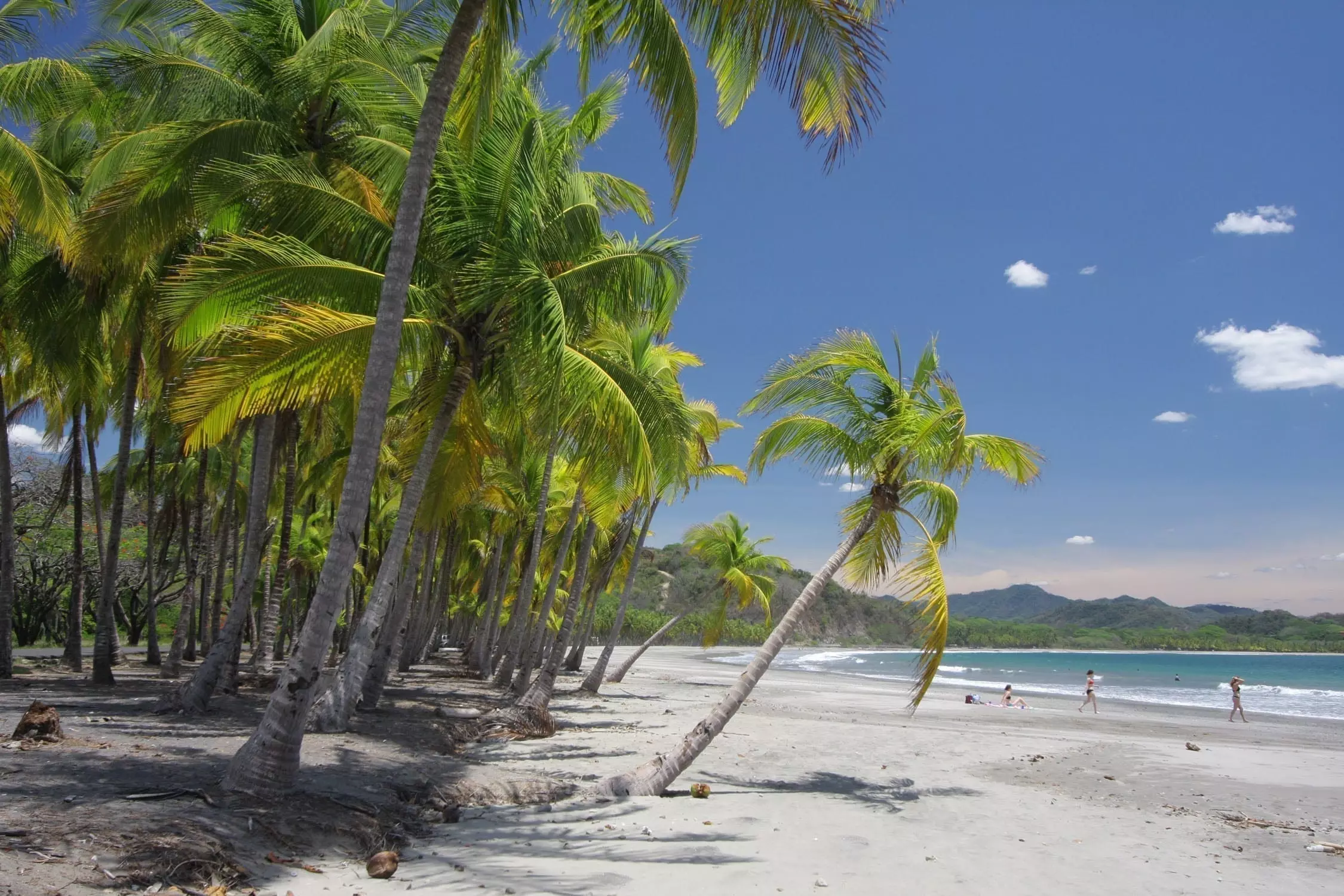Costa Rica Weather by Month
Plan your vacation with our weather guide
As you plan your vacation to this captivating country, one crucial factor that should be on top of your mind is the weather. Whether you’re seeking sun-soaked beaches, lush rainforests, or misty mountain peaks, understanding the climate patterns will help you make the most out of your trip.
In this Costa Rica guide , we’ll dive into the fascinating world of seasons and climates that shape this beautiful nation. From golden rays to refreshing downpours and everything in between, get ready to embark on a journey through Costa Rica’s ever-changing climate tapestry.
How is the weather in Costa Rica?
Costa Rica’s weather is as diverse as its stunning landscapes. Nestled between the Caribbean Sea and the Pacific Ocean, this tropical paradise experiences a range of climates throughout the year. From sunny beaches to misty cloud forests, Costa Rica offers something for everyone.
In general, Costa Rica can be divided into two main seasons: the dry season and the rainy season. The dry season, known as summer or “verano,” runs from December to April. During this time, you can expect plenty of sunshine and warm temperatures across most parts of the country. It’s the perfect time to soak up some rays on pristine beaches or explore national parks without worrying about rain showers.
On the other hand, the rainy season, also referred to as winter or “invierno,” lasts from May to November. Don’t let that discourage you though! While it does rain more frequently during this time, it usually comes in short bursts followed by clear skies. Plus, with fewer tourists around and lush greenery everywhere you look, there’s a unique beauty in experiencing Costa Rica during its wetter months.
Costa Rica’s remarkable geography and diverse topography contribute to the creation of fascinating microclimates throughout the country. From misty cloud forests to sun-drenched beaches, Costa Rica offers an exceptional range of weather conditions and climates within a relatively small area.
These microclimates are influenced by factors such as elevation, proximity to the coast, and the country’s unique positioning between two oceans. As a result, Costa Rica experiences distinct weather patterns and climate variations from region to region and even within different seasons.
Whether you seek the tropical warmth of the coastal areas or the refreshing coolness of the highlands, Costa Rica’s microclimates ensure a captivating and ever-changing experience for visitors throughout the year. So, it’s important to note that even within these seasons, microclimates exist throughout different regions of Costa Rica. In short, Costa Rica’s weather is diverse and beautiful, offering something for everyone throughout the year.
Costa Rica weather by month
Costa Rica’s weather is as diverse and captivating as its lush landscapes. Each month brings its own unique climate, offering travelers a variety of experiences throughout the year.
In January and February, Costa Rica basks in the glory of its dry season, offering visitors a delightful respite from rainfall. The weather during this month showcases the country’s pleasant climate, characterized by warm temperatures, abundant sunshine, and clear skies.
January and February
January and February is the heart of the high tourist season in Costa Rica, as travelers flock to the country to enjoy its stunning beaches, lush rainforests, and vibrant wildlife. With an average temperature ranging from the mid-70s to low 80s Fahrenheit (mid-20s to high 20s Celsius). It is perfect weather for outdoor activities such as hiking, snorkeling, and exploring the diverse ecosystems that make Costa Rica an ecological wonderland.
March and April
March and April mark the transition from the dry season to the green season in Costa Rica. During these months, the weather begins to shift, bringing occasional showers and a lush revitalization to the landscapes. The climate remains warm and pleasant, with temperatures ranging from the high 70s to low 80s Fahrenheit (around 25 to 27 degrees Celsius).
While March still retains some dryness, April experiences increased rainfall, marking the start of the green season. These months offer a unique blend of vibrant sunshine and refreshing showers, creating a perfect balance for outdoor activities and nature exploration. Visitors can witness the country’s flora and fauna thrive amidst the rejuvenating rainfall, making it an ideal time to experience Costa Rica’s natural beauty in its most enchanting form.
May
In May, Costa Rica transitions further into the green season, characterized by increased rainfall and lush vegetation. This month marks the beginning of the “shoulder season,” with fewer tourists and more affordable prices. The weather in May offers a mix of sunny mornings and afternoon showers, as the country experiences intermittent rainstorms that contribute to its diverse ecosystems. Temperatures remain warm, with average highs in the mid-80s Fahrenheit (around 29 degrees Celsius).
The green season brings a vibrant, rejuvenated landscape, with flourishing rainforests and gushing rivers. It’s an excellent time to witness the country’s biodiversity, as wildlife becomes more active, and waterfalls and rivers are at their fullest. Embracing Costa Rica’s weather in May allows travelers to immerse themselves in its natural beauty and experience the unique charm of the green season.
June through August
From June through August, Costa Rica experiences its rainy season, also known as the green season. During this time, the country receives the highest amount of rainfall, resulting in lush landscapes and flourishing wildlife. The weather in these months is characterized by a mix of sunshine, intermittent showers, and occasional thunderstorms. Temperatures remain warm, with highs ranging from the mid-70s to low 80s Fahrenheit (mid-20s to high 20s Celsius).
While the rainfall is more frequent, it usually occurs in the afternoons, leaving mornings relatively dry for outdoor activities. The green season offers a unique opportunity to witness Costa Rica’s rainforests in their full splendor, with vibrant flora and fauna abound. It’s a great time for nature enthusiasts and adventure seekers to enjoy activities such as white-water rafting, exploring cloud forests, and observing the incredible biodiversity that thrives during this season
September and October
September and October mark the latter part of Costa Rica’s rainy season, characterized by increased rainfall and occasional tropical storms. During these months, the weather can be unpredictable, with a mix of sunny intervals and heavy downpours. The climate remains warm, with temperatures ranging from the high 70s to low 80s Fahrenheit (around 25 to 27 degrees Celsius).
While September and October are part of the rainy season, it’s worth noting that the intensity of rainfall gradually diminishes towards the end of October. The lush green landscapes and fewer crowds make it an appealing time to visit for those seeking a more tranquil experience. It’s important to come prepared with rain gear and flexible plans, as weather conditions can change rapidly.
November
In November, Costa Rica begins to transition from the rainy season to the dry season, offering a pleasant climate and a mix of sunny days and occasional showers. This month marks the end of the rainy season, and the weather gradually becomes drier as the days progress. Temperatures remain warm, with average highs ranging from the high 70s to low 80s Fahrenheit (around 25 to 27 degrees Celsius).
November is considered a shoulder season, with fewer tourists and more affordable prices, making it an ideal time to visit. The landscapes are still lush and vibrant from the recent rainfall, and the country’s natural beauty shines through. Outdoor activities, such as hiking, exploring national parks, and enjoying the stunning beaches, are popular during this time.
November provides a delightful combination of favorable weather conditions and fewer crowds, allowing visitors to make the most of their Costa Rican adventure.
December
December marks the beginning of Costa Rica’s dry season, offering a delightful climate characterized by warm and sunny days. As the rainy season comes to an end, December brings drier weather with minimal rainfall, making it an ideal time to visit the country. Temperatures are pleasant, with average highs in the mid-80s Fahrenheit (around 29 degrees Celsius).
The clear skies and lower humidity create perfect conditions for outdoor activities and exploring the diverse landscapes of Costa Rica. December is a popular time for beachgoers, as the pristine coastal areas provide ample opportunities for swimming, snorkeling, and sunbathing. It’s also a great time to explore national parks, hike through rainforests, and engage in adventurous activities such as ziplining and surfing. The dry season in December sets the stage for a memorable vacation, allowing visitors to fully enjoy the natural beauty and attractions that Costa Rica has to offer.
In Costa Rica, every month has something special to offer based on its distinct weather patterns. Whether you’re seeking sun-drenched beaches or misty cloud forests, there is no shortage of natural wonders waiting to be explored in this tropical paradise.
- Read More: Best Time to Visit Costa Rica



Exploring Costa Rica's Dry Season
Costa Rica’s Golden Season, also known as the dry season, is a time of abundant sunshine and warm temperatures.
The dry season is a captivating adventure that unveils the country’s stunning landscapes and diverse ecosystems. The dry season typically spans from December to April, offering travelers optimal weather and ideal conditions for outdoor exploration. Making it the perfect time for outdoor activities such as hiking through lush rainforests or lounging on pristine beaches. The days are long and filled with endless possibilities – whether you want to explore volcanoes, go zip-lining through the canopy, or simply relax by the pool with a refreshing cocktail.
With minimal rainfall and abundant sunshine, visitors can bask in the warm temperatures and clear skies while immersing themselves in the beauty of Costa Rica’s natural wonders.
One of the highlights of the Golden Season is witnessing an array of wildlife. As the rains subside and rivers recede, animals come out in search of food and water. You may spot monkeys swinging from tree branches or colorful toucans perched on branches.
The clear skies during this time offer stunning views of Costa Rica’s natural wonders. Imagine gazing at the majestic Arenal Volcano against a backdrop of azure blue sky or watching a breathtaking sunset over Manuel Antonio National Park.
Costa Rica’s golden season unveils a treasure trove of natural marvels, making it an unforgettable destination for adventure seekers and nature lovers alike.
Exploring Costa Rica's Rainy Season
Exploring Costa Rica during the rainy season, also known as the green season, is a captivating and immersive experience that unveils the country’s vibrant ecosystems in all their lush splendor.
Lasting from May to November, this season offers a unique perspective on Costa Rica’s natural beauty and a chance to witness its remarkable resilience.
While the weather during the rainy season may be characterized by occasional showers, thunderstorms, and high humidity, it contributes to the creation of a breathtaking landscape that is teeming with life. The forests burst with an intense green hue, and the air is filled with the sweet scent of tropical flora.
One of the highlights of exploring Costa Rica during the green season is the abundance of wildlife. The rainforest comes alive with the symphony of bird calls, and monkeys swing through the canopy in playful displays.
Numerous reptiles, amphibians, and insects can also be spotted, as they thrive in the humid environment. It’s an ideal time for birdwatching enthusiasts, as many migratory species return to Costa Rica during this season.
The rivers and waterfalls of Costa Rica are at their most impressive during the rainy season. The increased rainfall fills the rivers, creating powerful cascades that showcase the raw beauty of nature. Adventurers can witness breathtaking waterfalls such as La Fortuna, Montezuma, or La Paz, where the cascading water displays its full force and majesty.
It’s important to come prepared for the rainy season, with waterproof clothing, sturdy footwear, and a sense of adventure. Embracing the green season allows visitors to witness the true essence of Costa Rica’s rich biodiversity and appreciate its role as a haven for nature’s intricate tapestry. It’s an opportunity to connect with the environment, appreciate the beauty of rain, and immerse oneself in the wonders of this tropical paradise.



Discovering Costa Rica's Microclimate
Costa Rica’s ever-changing climate is a testament to the country’s remarkable geographic diversity and varied topography. From tropical rainforests to pristine coastlines, Costa Rica experiences a range of weather patterns and climatic conditions throughout the year.
One of the key factors that contributes to the country’s varied climate is its geographical location. Situated between the Caribbean Sea and the Pacific Ocean, Costa Rica experiences different weather patterns depending on which coast you are on.
On the Caribbean side, you’ll find a more humid and tropical climate with abundant rainfall throughout the year. This region is characterized by dense jungles, vibrant wildlife, and some of the most breathtaking waterfalls in Central America.
On the Pacific side, you’ll encounter a drier climate with distinct wet and dry seasons. The dry season typically runs from December to April when visitors can expect sunny skies and warm temperatures perfect for lounging on picturesque beaches or exploring volcanic landscapes.
The country is situated in a region where different weather systems converge, resulting in microclimates and distinct seasons. The weather can vary greatly depending on the region and elevation, creating a dynamic climate that keeps visitors on their toes. From the dry season with its sunny skies and warm temperatures to the rainy season that brings lush greenery and occasional showers, Costa Rica’s climate offers something for everyone.
Costa Rica’s ever-changing climate also means that weather conditions can shift rapidly throughout the day. It’s not uncommon to experience both sunshine and showers within just a few hours! So always be prepared with layers or an umbrella whenever you venture out.
Exploring the country’s ever-changing climate allows travelers to witness the unique beauty and resilience of its ecosystems, adapting and thriving in response to seasonal shifts. Whether it’s the cool mist of cloud forests, the refreshing rainfall of the green season, or the golden sunshine of the dry season, Costa Rica’s climate showcases the intricate dance between weather and nature throughout the different seasons.
Whether you’re planning an adventure-filled trip during peak tourist season or seeking tranquility amidst quieter months – Costa Rica has it all! Its diverse geography ensures there’s no shortage of activities regardless of when you visit.
FAQ Section: Weather in Costa Rica
Costa Rica has a tropical climate with two main seasons: the dry season and the rainy season.
The dry season in Costa Rica typically runs from December to April.
The rainy season in Costa Rica usually occurs from May to November.
It doesn’t rain all day during the rainy season in Costa Rica. Typically, rain showers occur in the afternoon or evening, with mornings being relatively dry
The average temperatures in Costa Rica range from 70°F (21°C) to 81°F (27°C) throughout the year.
Yes, the higher altitude regions, such as the mountains and cloud forests, tend to have cooler temperatures compared to the coastal areas.
Costa Rica is occasionally affected by hurricanes or tropical storms, primarily on its Caribbean coast. However, the occurrence is relatively rare
Yes, the dry season in Costa Rica is characterized by plenty of sunshine, making it an ideal time for outdoor activities and beach visits.
Yes, the rainy season lasts from May to November, with peak rainfall in September and October.
While rare, hurricanes can occur during the Atlantic hurricane season (June to November).
Costa Rica experiences a weather phenomenon called the “El Niño” and “La Niña” cycles, which can influence rainfall patterns. It’s advisable to check for any updates or warnings before your trip.
The dry season, especially the months of December and January, is a popular time for tourists to visit Costa Rica due to the favorable weather conditions.
There is no specific month to avoid, as Costa Rica offers different experiences throughout the year. However, some travelers prefer to avoid heavy rainfall and choose the dry season for outdoor activities.




